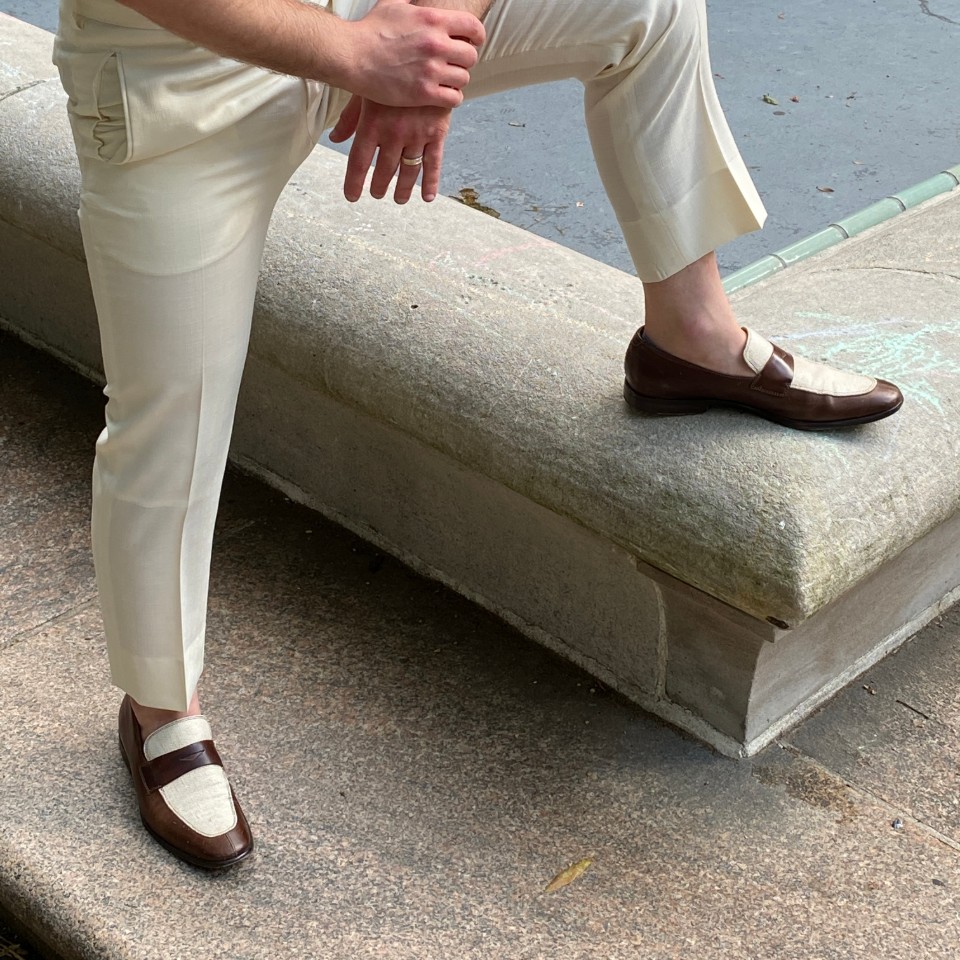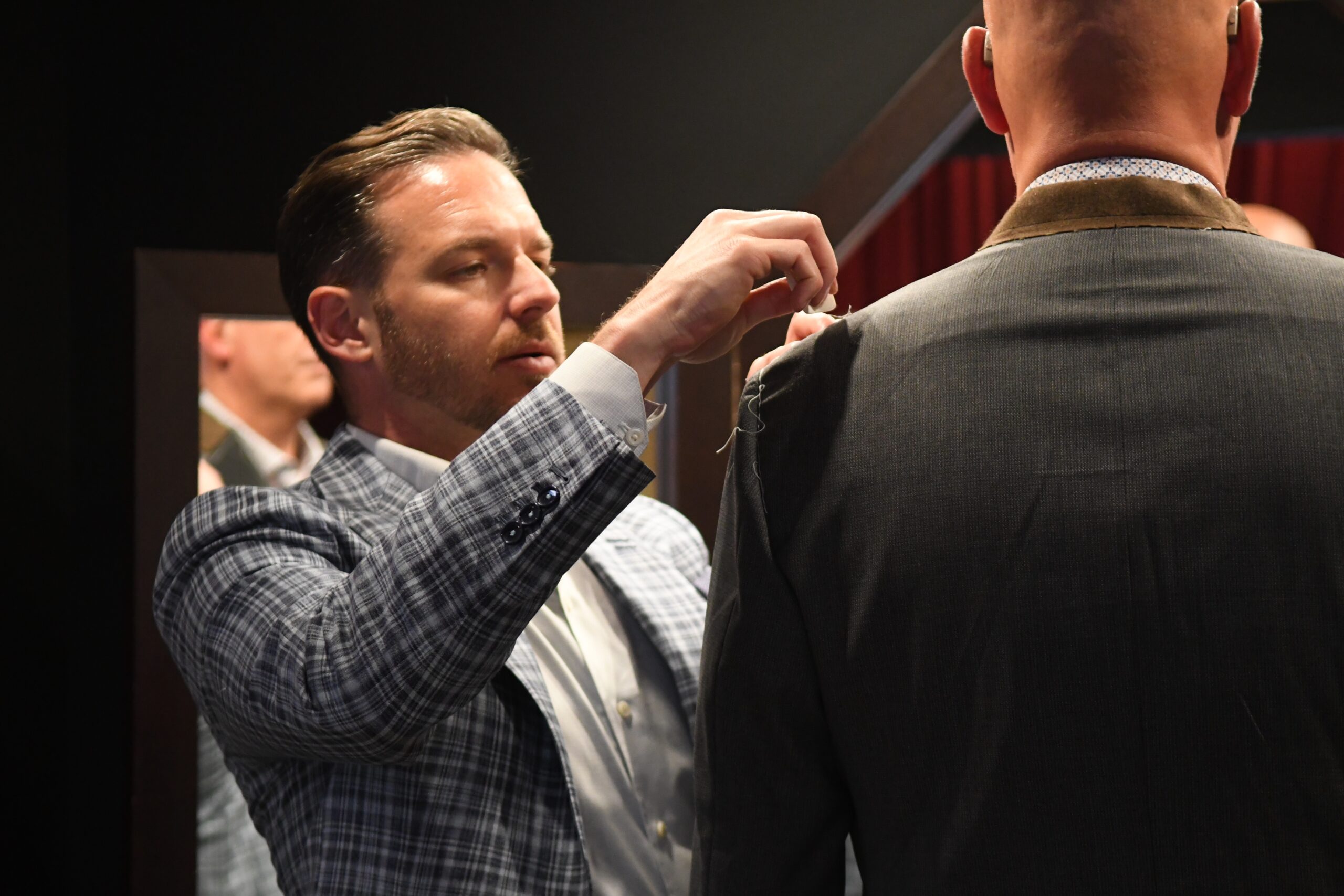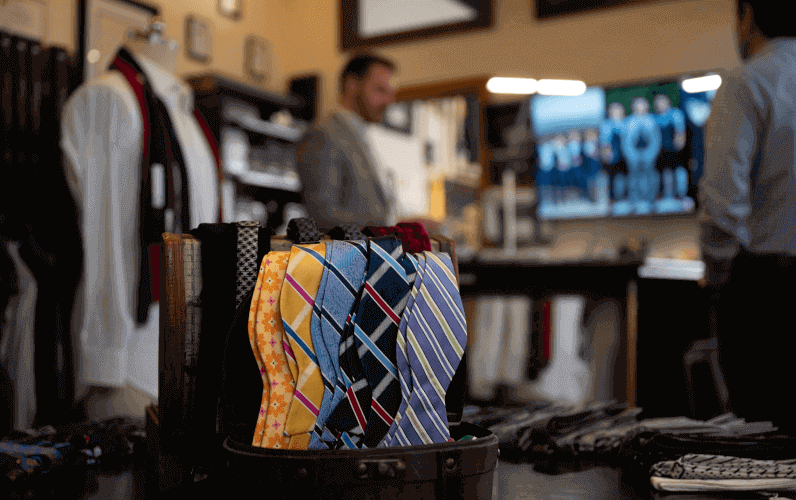A tailored garment’s quality is decided, first and foremost, by how it’s made. This is akin to looking under the hood of your car. The article below goes in-depth in terms of suit construction and will lay a solid foundation of knowledge that you can take to any retailer.
For more information on what goes into a quality suit, see our pages on fit and fabric.
Suit Construction: Canvas 101
Anyone who knows what they’re talking about will immediately bring up canvas as a make-or-break factor in whether or not a suit is worth wearing. Please note that discussions of canvas pertain to jackets only; pants don’t utilize canvas to the extent that coats do. We will use the terms “jacket,” “coat,” and “suit” interchangeably for the purposes of this discussion.
Though you won’t see a suit’s canvas unless you literally take it apart, it plays a major role in suit quality. So, what is canvas, and why does it matter so much?
In tailored menswear, canvas refers to an interlining in a jacket that lives between its fabric (the outside part you show to the world) and lining (the inside part that makes contact with your torso). Canvas gives a coat body and structure; without it, it would flow around you like a robe.
The highest-grade suiting canvases are made from natural materials that have been woven together. Horsehair and linen are typically used for canvas, though wool and cotton ones exist as well. The best constructions involve stitching this canvas to the cloth (more on that below).
There are three “styles” of canvas that exist on the market today: full canvas, fused canvas, and half canvas.
Full Canvas: This is the oldest and costliest construction method for suits. When Henry Poole first opened his doors onto Savile Row in 1846 and made his suits by hand, he made them with full canvas. High-quality suits in the year 2019 are still made with full canvases, even the ready-to-wear ones.
Jackets with full canvas have three distinct layers: fabric, canvas, and lining. If you pinch between the buttons, you should be able to feel the canvas between the fabric and lining.
Fused Canvas: Technological advances in the 20th century allowed manufacturers to produce all manner of goods much more quickly and inexpensively than previously possible. Fused canvas suits are a perfect example. The natural woven fibers of full canvas are replaced with a synthetic, non-woven material, also (sneakily) referred to as “canvas.” This canvas is glued (not stitched) to the cloth and put through a hot roller press, effectively “fusing” the fabric to the canvas and creating what becomes a single layer of material. This fusing goes all the way through the body of the coat and into its lapels and collar.
Half Canvas: The youngest suit-making method, half canvas garments attempt to split the difference between fused and full canvases in terms of quality and price. Utilizing a “floating chest piece,” half canvas coats feature a chest piece thicker than you’d find on a fused canvas garment. They also take a machine-stitched collar, which helps to craft and handsome lapel roll.
To keep costs down, half canvas suits still use glue throughout the garment in place of stitching.
Key Differences Between Canvas Types
Now that you know the different types of canvases offered, it’s time to discuss their value propositions. It’s easiest to consider this in three categories:
- Lifespan
- Breathability
- Drape
Lifespan
One question we often hear is, “How long should I expect a suit to last?” Well, it depends on how the garment is made, how often you wear it, and how well you and your dry cleaner take care of it.
Let’s assume you wear a suit once every other week, or about 26 annual wears. If the garment is made with a fused canvas, you can expect 3-5 years of life on the high end. This assumes you hang your suit up properly after each wear and let it air out overnight before placing it back in its garment bag. It also assumes that you only dry clean it about twice a year (yes, only twice) and that your dry cleaner thoughtfully and carefully cleans and presses the garment.
If we take the same wear and care pattern and forklift it onto a full canvas suit, that lifespan jumps up to 20-30 years.
This is a massive difference in lifespan. How is this possible?
Remember: fused canvas jackets use glue in the manufacturing process. The thing about glue is that it breaks down over time, particularly when exposed to heat. The dry cleaning and pressing processes use plenty of heat, and this will break down the glue in the jacket. Little air pockets will become visible where the fused canvas has separated from the fabric. This is not fixable, only replaceable.
This is why we say fused canvas garments will last you 3-5 years on the high end. If your dry cleaner just blasts your jacket with steam as opposed to carefully pressing, these bubbles could show up the first time you send it to the dry cleaner, which will likely be well before the three-year mark.
Because full canvas garments do not use glue in the manufacturing process, these issues won’t ever happen. This is where the significantly increased lifespan comes from.
Breathability
Did you ever put on a lightweight coat in 65-degree weather only to go outside and feel stuffy? It’s unpleasant to say the least, but it also begs the question: what causes a lightweight jacket to feel so warm?
Once again, glue is the culprit. In this case, the synthetic canvas shares the blame too.
If using the same exact cloth, a fused canvas jacket will feel lighter than its full canvas cousin, so it seems counterintuitive that it’d feel warmer. But remember: glue doesn’t breathe, and neither do synthetic fibers. As such, wearing fused garments is akin to wearing tailored Saran Wrap.
Full canvas garments, on the other hand, lack glue and use a canvas made from natural, woven fibers. Air can pass through, and breathability is improved, keeping you more comfortable.
Drape
The last big value-add of full canvas suits is their drape, which is superior to that of fused canvas ones.
As image consultants, we talk about drape a lot. The easiest way to think about it as it relates to canvas and construction is to ask how does this jacket’s front fall from the shoulder. Are the lines crisp and clean? Can the jacket hold its shape no matter how you move?
If the answer is “yes,” then you’re probably talking about a full canvas jacket. Fused canvas jackets tend to lose their shape easily and lack a certain polish in their visual presentation.
In Conclusion
Now that you’re aware of what a well-constructed suit is, we invite you to check out our pages on fit and fabric. As always, contact us anytime with questions.




